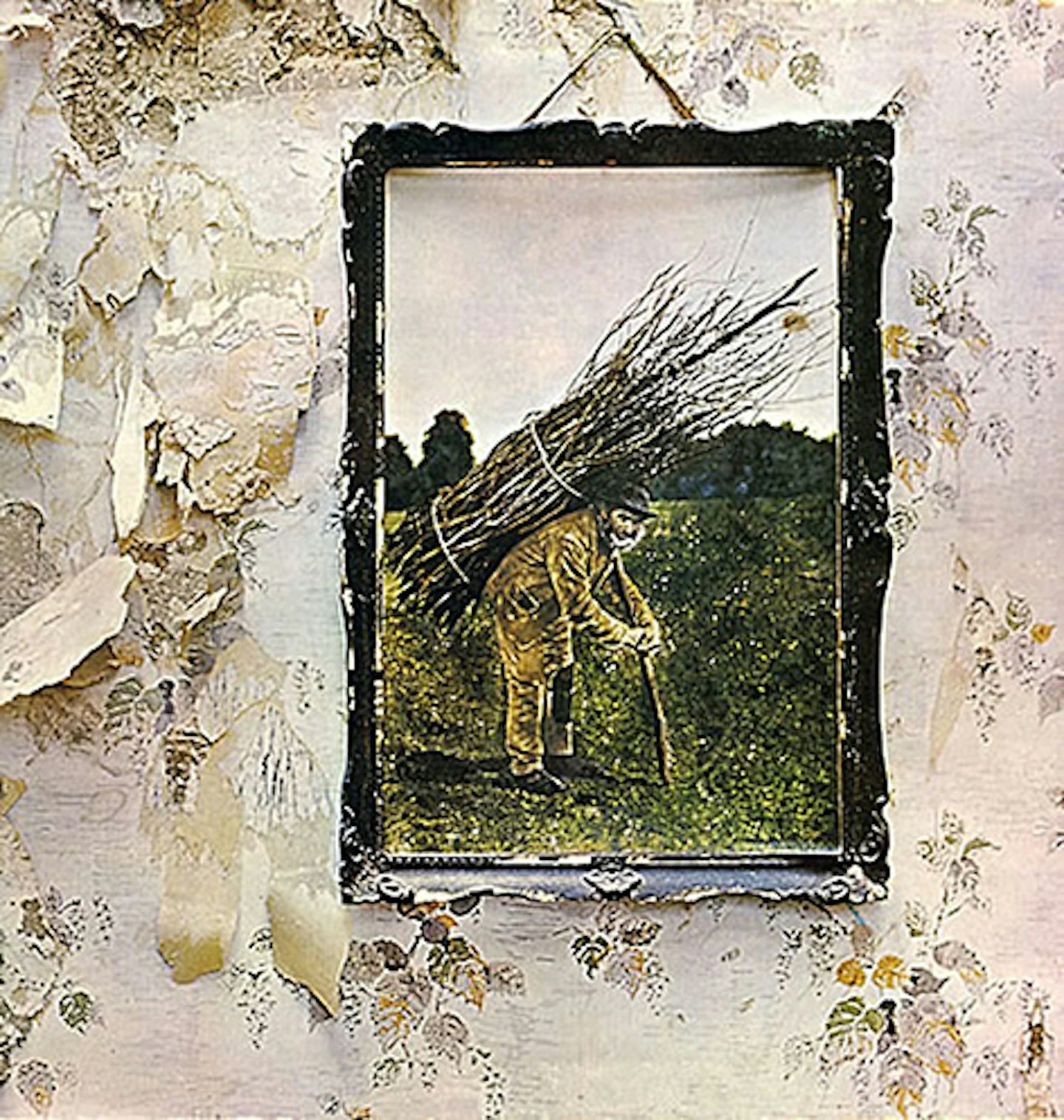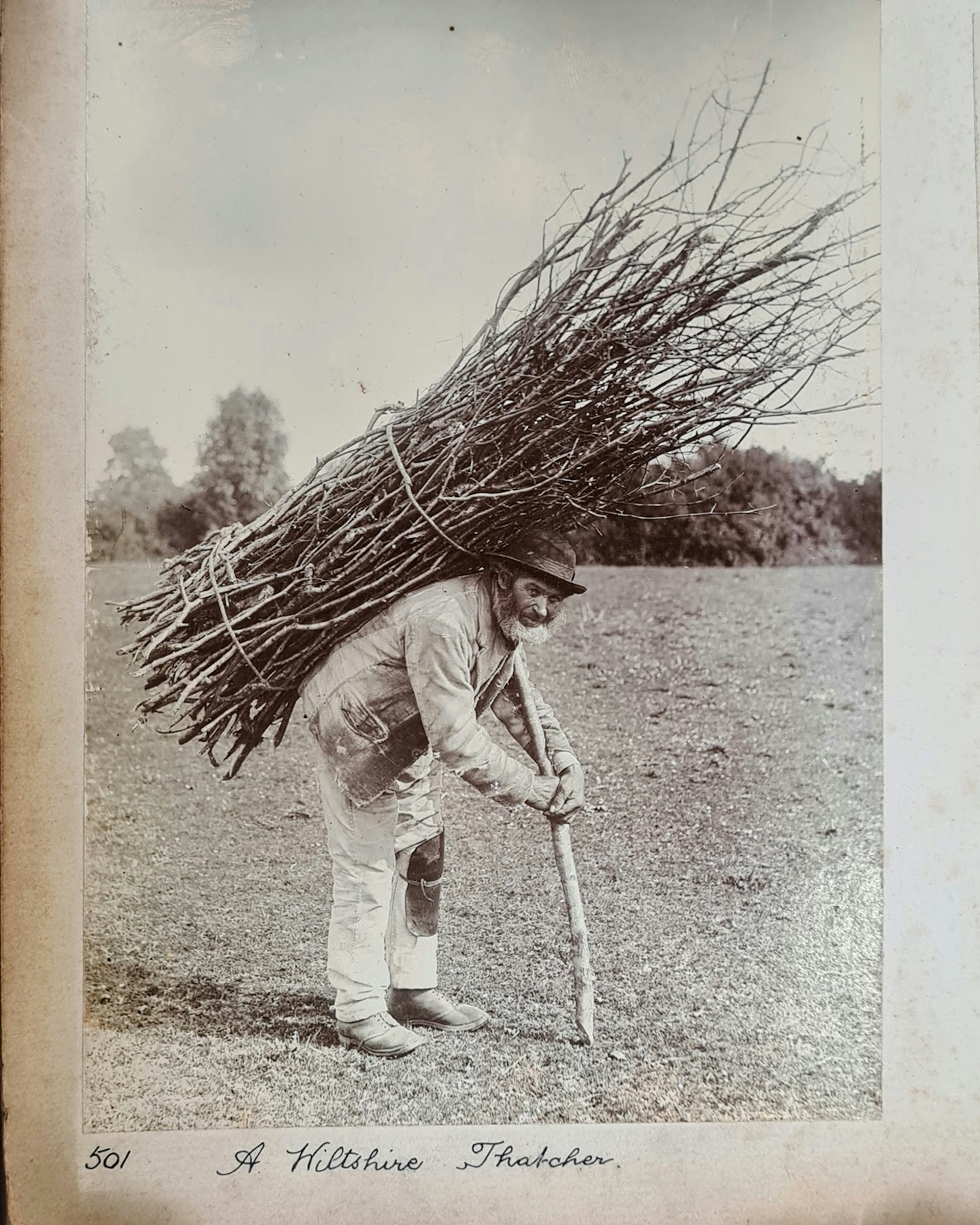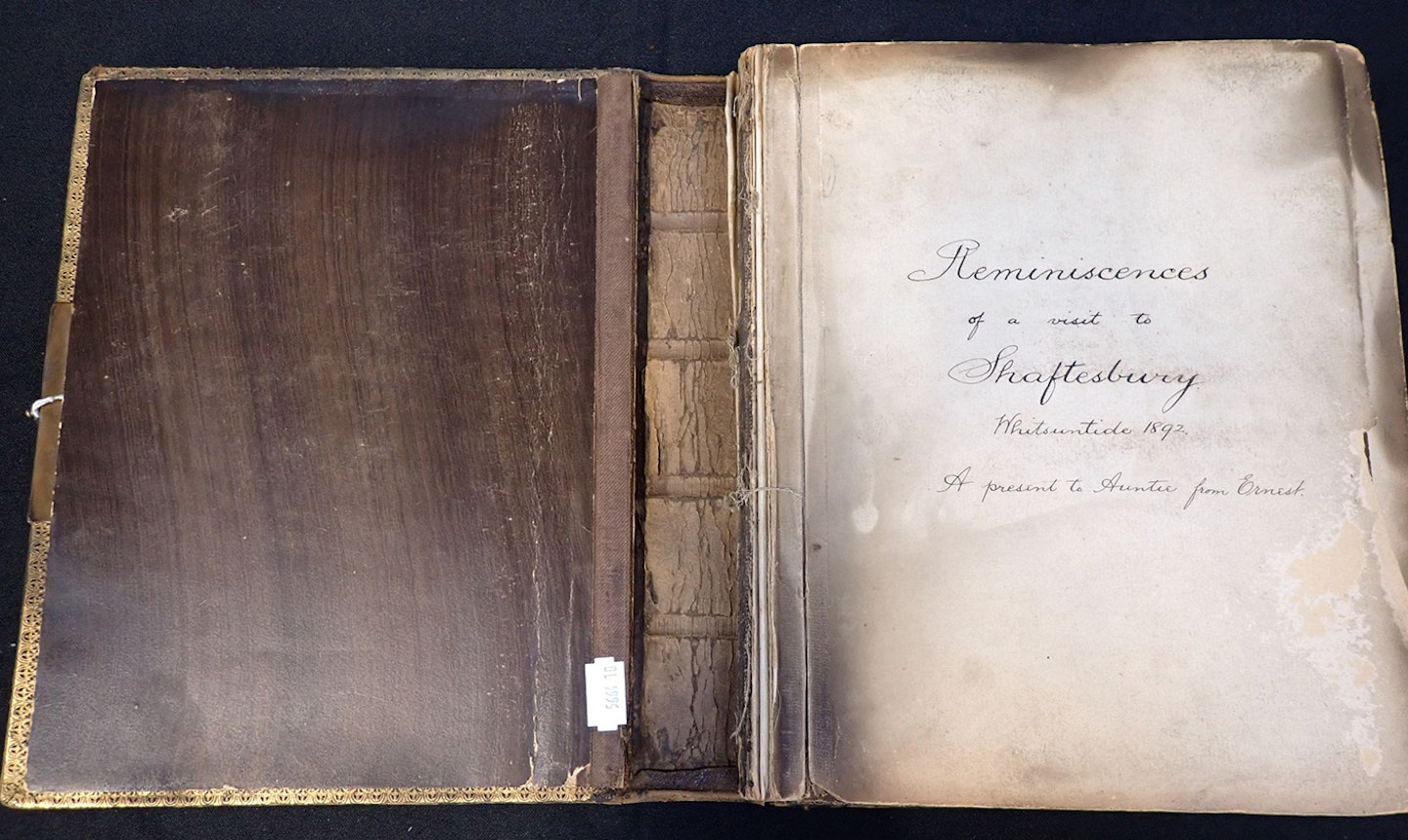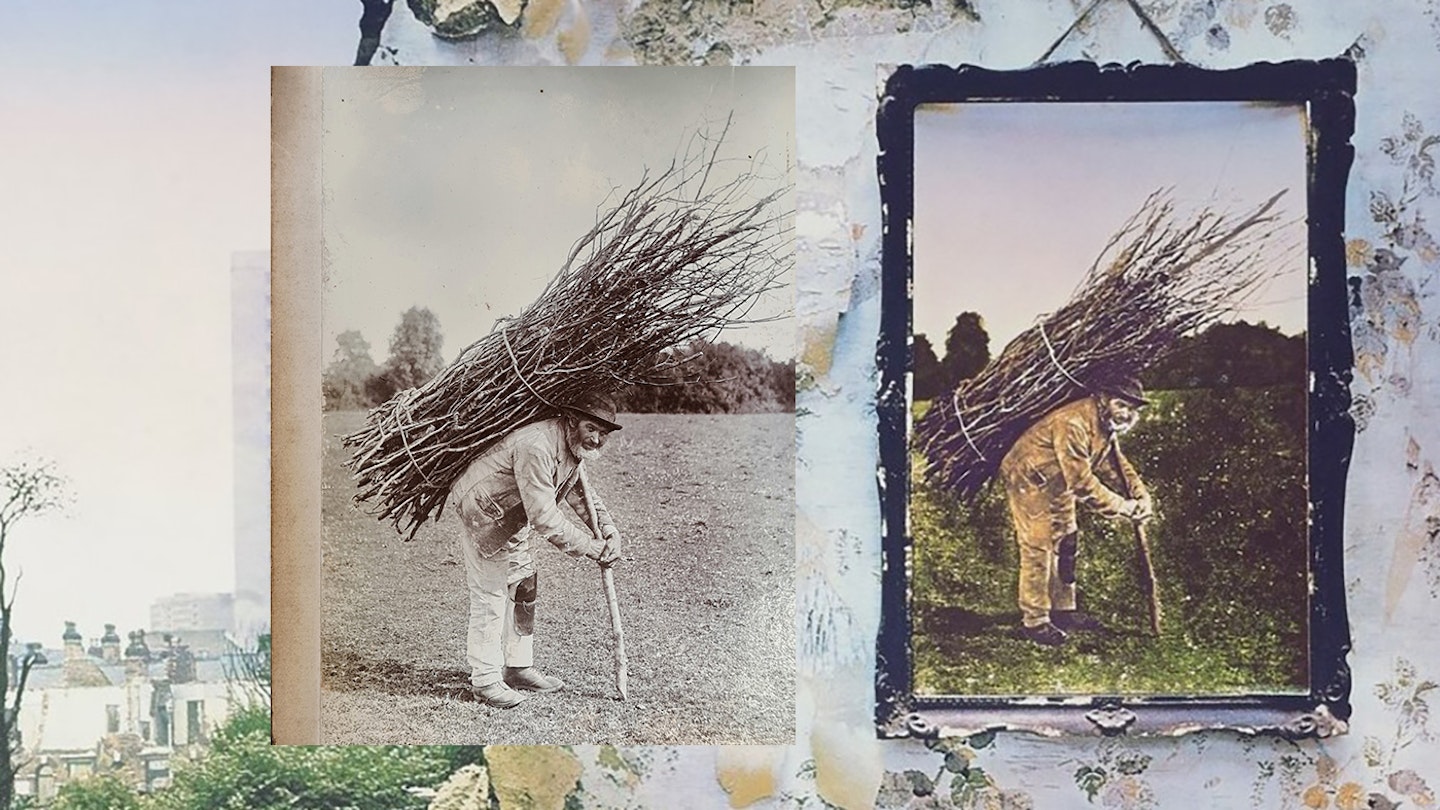52 years after the release of Led Zeppelin IV, the identity of the mysterious ‘stick man’ on the album’s cover has been finally been revealed.
Released on November 8, 1971, Led Zeppelin’s fourth album was officially untitled, didn’t feature the band’s name or any images of the group and instead used rune-like symbols to represent the four members, leading fans to pore over the artwork for meaning and hidden messages for decades.
While the inside cover depicts The Hermit, an ancient figure used in Tarot, the iconic cover image of an old man with a bundle of sticks on his back came from a colourised picture Robert Plant and Jimmy Page found in an antiques shop near the guitarist’s then home in Pangbourne, Berkshire.

“I used to spend a lot of time going to junk shops looking for things that other people might have missed,” Page said at the time. “Robert was on a search with me one time, and we went to this place in Reading where things were just piled up on one another. Robert found the picture of the old man with the sticks and suggested that we work it into our cover somehow. So we decided to contrast the modern skyscraper on the back with the old man with the sticks - you see the destruction of the old, and the new coming forward.”

Despite Page’s explanation, the esoteric symbolism throughout the album’s artwork has led fans to speculate over the years who the figure might be and what hidden meaning it may have. Some have said the picture depicts Harry ‘Brusher’ Mills, a hermit and snake catcher who lived near The New Forest, while others have claimed it to be folk magician George Pickingill, a Victorian farm labourer and local healer alleged to have introduced Page-favourite Aleister Crowley to the occult.
Led Zeppelin IV's 'stick man' revealed...
However, a chance discovery of the original photograph by historian Brian Edwards has revealed it to be neither a snake catcher nor a Victorian witch, but instead a Wiltshire thatcher by the name of Lot Long.
A public historian and historiographer, Edwards was researching Victorian photographs of Stonehenge when he came across the picture and, as a life-long Zeppelin fan, immediately recognised the image.
“As a fan I had to pinch myself,” Edwards tells MOJO. “If you see something like that out of context it takes a while for it to sink in. I had to have a reality check and show what I’d come across to my wife, but sure enough, it was our friend the stick man.”

The next step was trying to work out the provenance of the image, who took it, and who the man in the picture was. The picture was in a large album of photographs mostly taken in rural Wiltshire. The only information given was a handwritten description underneath simply saying ‘Wiltshire Thatcher’ and a note on the front of the album inscribed ‘To Aunty, from Ernest’ saying it was documenting a trip to Wiltshire in 1892.
“The first thing you notice is that as a photograph, it’s a really, really good photograph and also that the area of the tour being documented was quite a tight area geographically,” explains Edwards. “We had those clues, plus the name Ernest and as a bit of a stroke of luck I happened to remember that a lot of early photographers were also chemists. I only knew of one chemist in Wiltshire operating in the mid-century called Farmer, so I looked him up and he left Wilshire to start up a photography business in Brighton. He had three sons, one of whom was called Ernest. This Ernest not only went on to become a photographer but also a teacher of photography and became quite well known. Fortunately, I found his marriage certificate online and there were handwriting matches with the words in the photo album.”

“I had a similar bit of luck with the character in the photograph,” Edwards continues. “There were only around 30 or 40 thatchers working in Wilshire in the 1890s and I could rule a lot of them out as they would have been in the north of the county or their age ruled them out, which only left me with three. Once I’d whittled them down, there was only one at that time in that specific area which was Lot Long. So, we think our friend on the cover of Led Zeppelin IV is Lot Long from Mere in Wiltshire.”
“It’s such an intriguing photograph. The expression on his face, the manner in which he’s posing must have been excruciating to hold for so long for a Victorian photographer to take the picture. There’s so much character in it.”
Robert Plant: "I've now the old guy with sticks on his back on Zeppelin IV..."
Plant recently joked that he could now relate to the man in the picture in his old age. Reminiscing about his childhood visits to Bron-Yr-Aur, a rustic Welsh cottage with no electricity or running water where he returned to with Page to work on Led Zeppelin III, the singer spoke of the back-to-basics lifestyle the band adopted.
“It was a beautiful place and all those things were part of the bargain. You’re there for a reason and you’re just in it, so all that actually adds to it - the idea of going outside and bringing in kindling,” Plant said in an episode of his podcast Digging Deep. “All that stuff is part of the whole deal and remains so in my time now. In fact, the old guy with the sticks on his back on Zeppelin IV. I’m now that guy. I pick up kindling everywhere I go and wrap it around with a piece of baling twine and shunt it on my back just in case anyone’s driving by, and they go, ‘There’s that bloke from the Led Zeppelin IV album cover!”
It still remains to be seen how the image became duplicated, then colourised before finding its way into a second-hand shop near Reading, but Edwards makes the point that as Ernest Famer was a teacher and pioneer of multiple advances in photography at the turn of the century, it’s highly likely he would have used a photograph of his own with such good composition as an example to students or to try out new techniques on.
“If I hadn’t been a fan, I wouldn’t have made the connection. Plenty of people must have seen that photograph but for whatever reason it just escaped notice. As familiar as I am with it, I really did have to pinch myself,” says Edwards.
“Led Zeppelin have given me so much pleasure over the years. I just hope this find entertains the surviving members of the band and everyone who loves them. It’s a great thing to restore interest in that particular aspect of their work and the stories behind the artwork and design.”
Edwards has passed the photograph on to Wiltshire Museum in Devizes. An exhibition featuring the image, along with others taken in the West of England during the Victorian era, is scheduled to be held at the museum in spring 2024. For more information visit: www.wiltshiremuseum.org.uk
